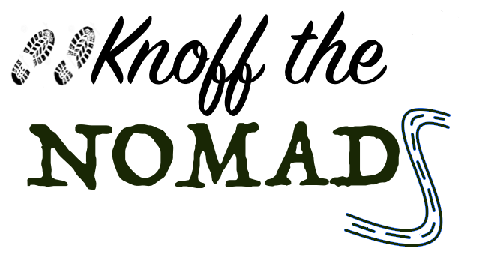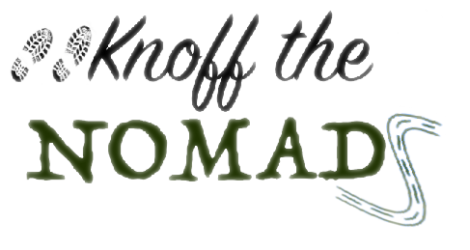Contents
Best Time to Visit Isla de la Plata
Before I talk about and show you all of the amazing things that we saw, I’ll add this caveat. If you’re thinking of going in the rainy season, you will have a very different experience than I’m going to describe. The reason the animal life was so amazing was that we were there during mating season. (May-September should be safe with high season from June-August) All animals from birds to whales to humans, will do stupid and awesome things to impress their mates. And we, somewhat voyeuristically, just get to sit back and enjoy.
What You Will See
The Humpbacks
Humpback Ballenas that you’ll see on your boat ride to Isla de la Plata spend their summers in the waters of the Antarctic and then make their way to warmer waters to mate. One of the reasons the males breach is to impress the females. I’ve heard its also just a lot of fun for them, which I believe. We spotted over 20 individual or groups of Humpbacks while in the boat. I paid $150 for a whale watching trip in Seattle for a whole day and we only saw 4-5. And animal rights and conservation aside, its really cool that they don’t have any restrictions on how close they can get, so the captains will do their best to get you up close and personal. We caught one amazing breach, watched a mom and calf swim around, and got close to about 10 total whales.
Green Sea Turtles
These guys will use Isla de la Plata as the ir egg laying grounds. We didn’t see any of that, but we were fortunate to see them swimming along side the boat hoping for some snacks to be tossed over.
ir egg laying grounds. We didn’t see any of that, but we were fortunate to see them swimming along side the boat hoping for some snacks to be tossed over.
Isla de la Plata – The Island
Once on the island, you’re in a cue with your tour group. It is a national park, so the guides are all members of the Association de Guides Naturalistas de Parque National Machalilla. As a group, you have to stay together and have to choose the high trail which is longer, or the lower shorter trail. The high trail is where you will see the Frigate birds nesting and doing their mating dance. This is the trail we did and I really recommend it. You do the majority of the climbing before you get to the crossroads, so don’t think that the high trail is going to be a lot more climbing. Also there are so many nests and birds to see that you will get plenty of breaks. Either way though, you’ll see the Blue Footed Boobies with their eggs and chicks if you’re there at the right time. Besides the Boobies and Frigates, you will also see many other species of beautiful birds, some interesting plant life, red crabs, and much more.
Blue Footed Boobies
The Boobies are everywhere! They lay their eggs on the ground so they literally will nest right in the middle to the trail and the park guides will have to create a work around. They mate for just one year and then find a new mate the following season, but for the year they both are there to take care of the eggs and feed the chicks. There are natural predators from above and still some rats on the island brought over from  ships landing many years ago. Most couples will lay 1-2 eggs, with the most being 3. Once the chicks are hatched they’re still vulnerable for the first few months so one parent will stay with them while the other goes hunting. By 2 months they’re getting their feathers and are big enough to protect themselves. We were fortunate enough to see everything from a day old chick to ones over 2 months. To describe everything we experienced with the Blue Footed Boobies wouldn’t do it justice. Just take my word for it, they’re worth seeing.
ships landing many years ago. Most couples will lay 1-2 eggs, with the most being 3. Once the chicks are hatched they’re still vulnerable for the first few months so one parent will stay with them while the other goes hunting. By 2 months they’re getting their feathers and are big enough to protect themselves. We were fortunate enough to see everything from a day old chick to ones over 2 months. To describe everything we experienced with the Blue Footed Boobies wouldn’t do it justice. Just take my word for it, they’re worth seeing.
Frigate Birds

The Frigates are everywhere in flight, even on the mainland, but seeing them in their nests, and especially watching the mating dance of the males was beautiful. They fill up their red throat pouches and will make a hollow sort of tapping sound while dancing with their wings spread. We watched a female approach a male while he was doing his dance and they snuggled up a bit. I asked the guide if he had made a love connection and he said it would be up to the female and they aren’t mated until she actually lays her eggs.
My Highlight
My number 1 highlight was watching a female Boobie land and take over the egg duty from her mate. Theyslowly switched places without ever leaving the egg exposed to danger. Then, after stretching his legs and letting the world know he was coming with his song (sort of like an airy flute), he took off to get some fish in his belly.
Snorkelling
I knew from the beginning I wasn’t going to snorkel. I’ve heard the water isn’t very clear, and honestly, it was a little chilly. So I stayed on the boat, but was still treated to the best part of the snorkel, a giant Manta Ray. They told us we were fortunate to see one, and from the boat we actually spotted two. One came really close and flapped his pectorals out of the water. He was almost as wide as the boat in the water, maybe 10-12 feet across. Other than that though, you might see a turtle or two, but the water is pretty murky.
Sum It Up
If you’re like me and debating seeing the Isla de la Plata, do it. (As long as it is mating season). If you’re visiting Puerto Lopez you’ll have your pick of tour companies to take you. As a side note, you really should visit Puerto Lopez for a few days. Learn more in my guide to Puerto Lopez. Bring a good camera and some layers to stay warm. Lunch is provided, but bring a couple of extra snacks. And come ready to learn about some amazing animals that are unique to this area and watch them as they prepare to create their next generation.




The blue boobys are my favorite – thank you for the pictures – it is nice to be able to see the beauty of where you are! so cute the way the boobys walk and take shifts with their egg 🙂
I totally agree! The two boobies switching places on the eggs was my favorite sight of the day I think. They were so deliberate about it. Thanks for reading!